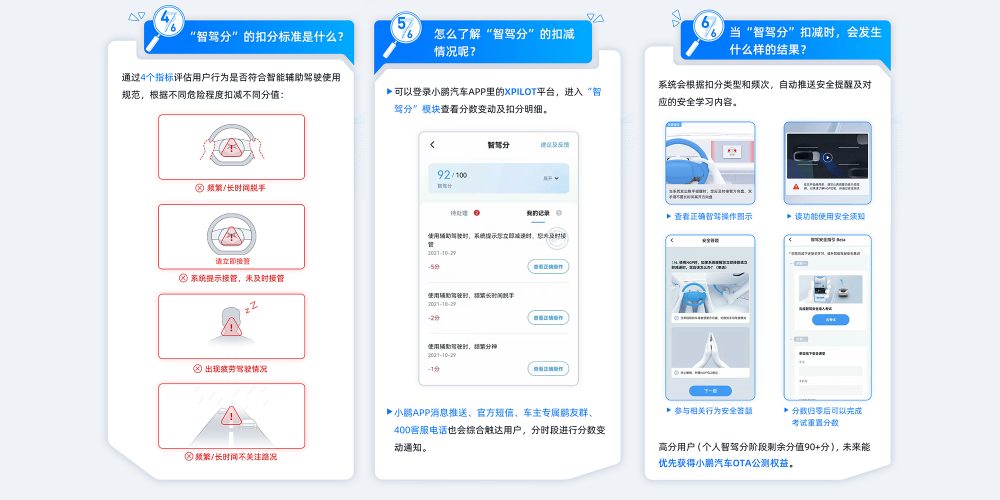
Chinese EV automaker XPeng Motors has taken a play out of Tesla’s book and will implement a ‘Smart Driving Points’ scoring system to ensure future owners don’t abuse its self-driving technology. The safety monitoring system has launched in beta form ahead of a 2022 rollout, and appears to be eerily similar to Tesla’s recent ‘Safety Score’ feature for its Autopilot technology.
XPeng Inc. is an electric mobility company trying to take China by storm on the ground and the air. XPeng Motors is focused on EV technologies, while its other entity, HT Aero, is developing flying cars.
The EV entity’s most recent vehicle, the P5, launched in China in September and will include XPeng’s Navigation Guided Pilot (NGP) autonomous driving feature.
EV competitors with similar technology have seen drivers cleverly dupe ADAS and self-driving systems while endangering their lives and others on roads. We at Electrek have reported Tesla drivers devising intricate workarounds to drive completely hands-free, while Chinese competitors like Li Auto have seen similar issues.
Fellow EV automaker NIO announced a required test before anyone can use its assisted driving features, following a fatal crash at the hands of its misuse.
Tesla launched a similar beta process in September called “Safety Score,” which measures a number of driving situations to ensure EV owners drive safely enough to test out the company’s full-self driving (FSD) technology.
Now, XPeng has (quickly) followed suit by launching a very similar safety measuring system.

XPeng launches safety measurement tool similar to Tesla
In a recent post on its Weibo page, XPeng Motors announced the beta launch of “Smart Driving Points,” to measure a driver’s safe practices on the road. The trial program currently exists as a small public test ahead of a full rollout announced for the first half of 2022.
According to a report from CnEVPost out of China, the “Smart Driving Points” system gives each driver 100 points when they initially link to their XPeng EV. The vehicle then measures the driver’s safety practices while they use XPeng’s ADAS, based on the following parameters:
- Whether the driver’s hands are frequently off the steering wheel and whether they remain off the wheel for an extended period of time.
- How quickly the driver takes control of the vehicle after the system issues the takeover prompt.
- Whether a driver turns on the ADAS function after 4 continuous hours of driving.
- Notes if a driver doesn’t pay attention to road conditions during long or frequent trips.
XPeng will then deduct points from the driver based on the degree of risk of these and other behaviors. Drivers with at least 90 points will receive early access to OTA updates, while drivers whose points drop to zero will need to retake a safety test to start back at 100. Points will automatically reset to 100 every 12 months as well.
XPeng is calling this system the first of its kind in China, although NIO already requires the initial safety test, and Tesla has already created the “Safety Score” system. This is not the first time XPeng has been accused of closely following Tesla’s lead.
Regardless of who did it first and the clear liability safety net these measures provide them, it’s encouraging to see EV automakers putting safety processes in place as assisted and autonomous driving technologies become more plentiful.
XPeng drivers should see the beta version of “Smart Driving Points” roll out in December.
Subscribe to Electrek on YouTube for exclusive videos and subscribe to the podcast.
Author: Scooter Doll
Source: Electrek



